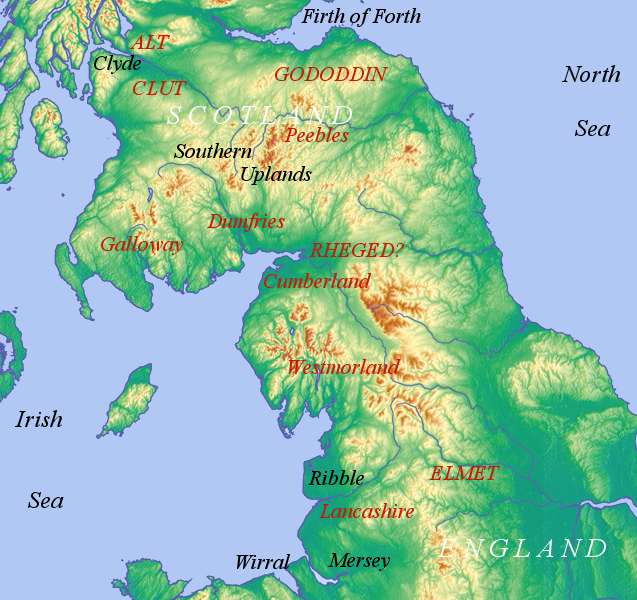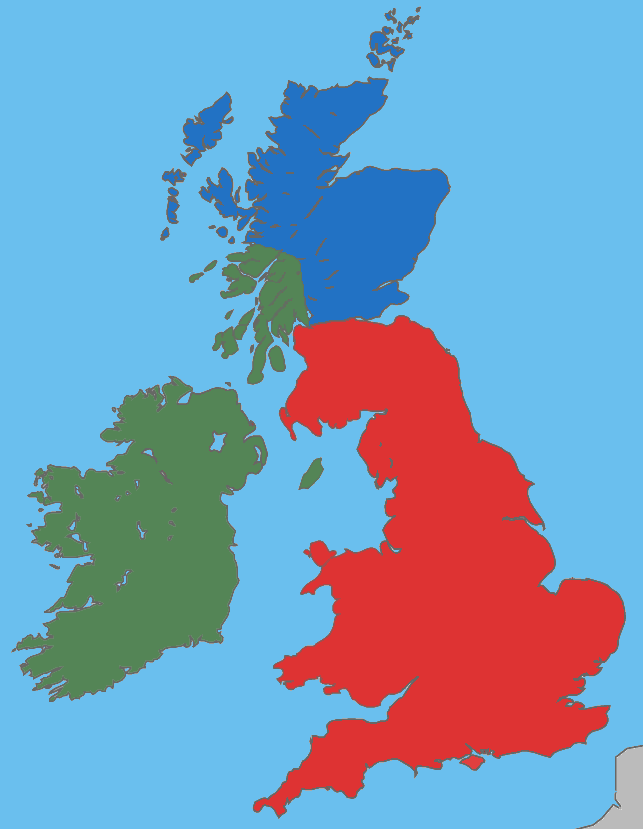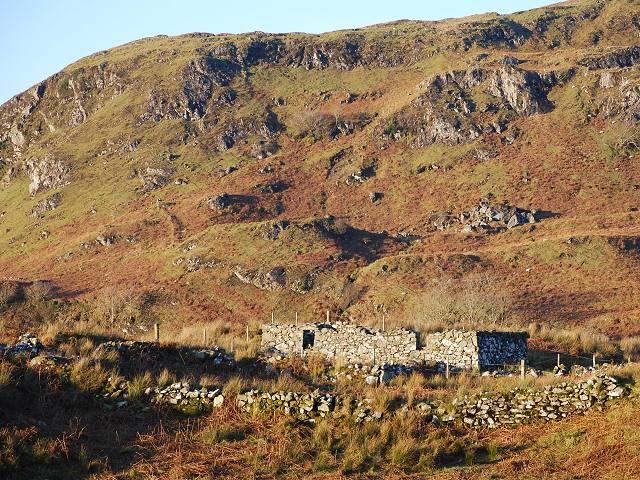|
Airdrie, North Lanarkshire
Airdrie (; ; ) is a town in North Lanarkshire, Scotland. It lies on a plateau 400 ft (130 m) above sea level, 12 miles (19 km) east of Glasgow. , it had a population of 37,130. Airdrie developed as a market town in the late 17th century following an act of Parliament allowing it to hold a weekly market. It later grew in prominence as a centre for weaving and manufacturing, as well as being the settlement near several coalmines. In the mid 19th century, the town expanded greatly as a result of immigration and the development of iron works and railway links. The first public library in Scotland was established in Airdrie in 1853. During the 20th century, industrial decline took place in Airdrie, with heavy industry closing down across much of the town. In the 21st century, Airdrie has continued as a regional centre for services and retail, as well as being a commuter settlement within the Central Belt. Historically part of Lanarkshire, Airdrie forms a conurbation ... [...More Info...] [...Related Items...] OR: [Wikipedia] [Google] [Baidu] |
North Lanarkshire
North Lanarkshire (; ) is one of the 32 council areas of Scotland. It borders the north-east of the Glasgow City council area and contains many of Glasgow's suburbs, commuter towns, and villages. It also borders East Dunbartonshire, Falkirk (council area), Falkirk, Stirling (council area), Stirling, South Lanarkshire, and West Lothian. The council area covers parts of the shires of Scotland, historic counties of Dunbartonshire, Lanarkshire, and Stirlingshire. The council is based in Motherwell. The area was formed in 1996, covering the districts of Cumbernauld and Kilsyth (district), Cumbernauld and Kilsyth, Motherwell (district), Motherwell, and Monklands (district), Monklands, plus the Chryston and Auchinloch areas from Strathkelvin district, all of which had been in the Strathclyde region between 1975 and 1996. As a new single-tier authority, North Lanarkshire became responsible for all functions previously performed by both the regional council and the district councils, whi ... [...More Info...] [...Related Items...] OR: [Wikipedia] [Google] [Baidu] |
Shires Of Scotland
The counties or shires of Scotland () were historic subdivisions of Scotland. The shires were originally established in the Middle Ages for judicial purposes, being territories over which a Sheriff principal, sheriff had jurisdiction. They were distinct from the various older mormaerdoms, earldoms and other territories into which Scotland was also divided, which are collectively termed the provinces of Scotland by modern historians. The provinces gradually lost their functions, whereas the shires gradually gained functions. From the 16th century, the shires served as county constituency, constituencies, electing shire commissioners to the Parliament of Scotland. From 1667 each shire had Commissioners of Supply, commissioners of supply responsible for collecting local taxes; the commissioners of supply were subsequently given various local government functions as well. From 1797, the shires also served as areas for organising the militia, which was the responsibility of a lord-li ... [...More Info...] [...Related Items...] OR: [Wikipedia] [Google] [Baidu] |
George Chalmers (antiquarian)
George Chalmers (December 1742 – 31 May 1825) was a Scotland, Scottish antiquarian and political writer. Biography Chalmers was born at Fochabers, Moray, the second son of the local postmaster, James Chalmers (who was a grandson of George Chalmers of Pittensear in Lhanbryde) and his wife Isabella.Fleming, Thomas. "George Chalmers (December 1742-31 May 1825)," in Clyde N. Wilson (ed.), ''American Historians, 1607-1865'', Dictionary of Literary Biography Vol. 30, Detroit: Gale Research, 1984, 52. After completing a course at King's College, Aberdeen, he studied Scots law, law at the University of Edinburgh for several years. Two uncles on the father's side had settled in British North America, and Chalmers visited Maryland in 1763, apparently to assist in recovering a tract of land about which a dispute had arisen. He began practising as a lawyer at Baltimore. As a Loyalist, however, at the outbreak of the American War of Independence, he abandoned his professional prospect ... [...More Info...] [...Related Items...] OR: [Wikipedia] [Google] [Baidu] |
She's Oor Ain Toon Still - Geograph
She or S.H.E. may refer to: Language * She (pronoun), the third person singular, feminine, nominative case pronoun in modern English Places * She County, Anhui ** She Prefecture, 589-1121 * She County, Hebei * She River, or Sheshui, Hubei * Shetland Islands, IIGA country code People * She people ** She Chinese, a Sinitic language ** She language, a Hmong–Mien language, Guangdong * She (surname) * She (Qi) (died 613 BC), ruler * Empress She (died 397), Later Qin dynasty Literature and films * '' She: A History of Adventure'', an 1887 novel by H. Rider Haggard, and its film adaptations ** ''She'' (1911 film), a silent short film featuring Marguerite Snow ** ''She'' (1916 film), a silent film produced in the UK ** ''She'' (1917 film), a silent film starring Valeska Suratt ** ''She'' (1925 film), a silent film starring Betty Blythe ** ''She'' (1935 film), featuring Helen Gahagan ** ''She'' (1965 film), starring Ursula Andress ** ''She'' (1984 film), starring Sandahl Bergm ... [...More Info...] [...Related Items...] OR: [Wikipedia] [Google] [Baidu] |
Arms Of Airdrie
Arms or ARMS may refer to: *Arm or arms, the upper limbs of the body Arm, Arms, or ARMS may also refer to: People * Ida A. T. Arms (1856–1931), American missionary-educator, temperance leader Coat of arms or weapons *Armaments or weapons **Firearm *Coat of arms **In this sense, "arms" is a common element in pub names Enterprises *Amherst Regional Middle School *Arms Corporation, originally named Dandelion, a defunct Japanese animation studio who operated from 1996 to 2020 * TRIN (finance) or Arms Index, a short-term stock trading index *Australian Relief & Mercy Services, a part of Youth With A Mission Arts and entertainment *ARMS (band), an American indie rock band formed in 2004 * ''Arms'' (album), a 2016 album by Bell X1 * "Arms" (song), a 2011 song by Christina Perri from the album ''lovestrong'' * ''Arms'' (video game), a 2017 fighting video game for the Nintendo Switch *ARMS Charity Concerts, a series of charitable rock concerts in support of Action into Research for M ... [...More Info...] [...Related Items...] OR: [Wikipedia] [Google] [Baidu] |
Blaeu - Atlas Of Scotland 1654 - GLOTTIANA PRÆFECTVRA INFERIOR - Lower Clydesdale , a surname
{{disambiguation, surname ...
Blaeu is the name of * Willem Blaeu (1571–1638), Dutch cartographer and father of Joan Blaeu * Joan Blaeu (1596–1673), Dutch cartographer and son of Willem Blaeu * ''Blaeu Atlas of Scotland'', by Joan Blaeu, published in 1654 * ''Atlas Blaeu'' or ''Atlas Maior'', by Joan Blaeu, published in 1635 * ''Stedenboek Blaeu'' or '' Toonneel der Steeden'', by Joan Blaeu, published in 1649 See also * Blaauw Blaauw () is a Dutch language, Dutch surname. It is an archaic spelling of modern Dutch ''blauw'', meaning ''blue''. This may have referred to the pale skin, the eyes, or the clothes of the original bearer of the name or the surname may be metonymic ... [...More Info...] [...Related Items...] OR: [Wikipedia] [Google] [Baidu] |
Airthrey Castle
Airthrey Castle is a historic building and estate which now forms part of the buildings and grounds of the University of Stirling in central Scotland. The 18th-century building with 19th-century additions occupies a beautiful setting in landscaped grounds in the southern edge of the Ochil Hills, above the Forth valley. It is located close to Bridge of Allan, two miles from the historic city of Stirling. Name There are several suggested origins of the name "Airthrey". One is that it is a corruption of Ard-rhedadie (a high or ascending road, referring to the old road which leads through it to Sheriffmuir). It could alternatively come from the Scottish Gaelic, Gaelic "Aithrin" – "a sharp point" or "conflict". This could refer to a battle fought near the site of the Castle in 839, when the Picts were defeated by the Scots under Kenneth I of Scotland, Kenneth McAlpine (standing stones in the park to the east of the Castle are reputed to commemorate the battle). Another, Br ... [...More Info...] [...Related Items...] OR: [Wikipedia] [Google] [Baidu] |
Kingdom Of Strathclyde
Strathclyde (, "valley of the River Clyde, Clyde"), also known as Cumbria, was a Celtic Britons, Brittonic kingdom in northern Britain during the Scotland in the Middle Ages, Middle Ages. It comprised parts of what is now southern Scotland and North West England, a region the Welsh tribes referred to as ''Yr Hen Ogledd'' (“the Old North"). At its greatest extent in the 10th century, it stretched from Loch Lomond to the River Eamont at Penrith, Cumbria, Penrith. Strathclyde seems to have been annexed by the Goidelic languages, Goidelic-speaking Kingdom of Alba in the 11th century, becoming part of the emerging Kingdom of Scotland. In its early days it was called the kingdom of ''Alt Clud'', the Brittonic name of its capital, and it controlled the region around Dumbarton Rock. This kingdom emerged during Britain's Sub-Roman Britain, post-Roman period and may have been founded by the Damnonii people. After the Siege of Dumbarton, sack of Dumbarton by a Viking army from Kingdom ... [...More Info...] [...Related Items...] OR: [Wikipedia] [Google] [Baidu] |
Welsh Language
Welsh ( or ) is a Celtic languages, Celtic language of the Brittonic languages, Brittonic subgroup that is native to the Welsh people. Welsh is spoken natively in Wales by about 18% of the population, by some in England, and in (the Welsh colony in Chubut Province, Argentina). It is spoken by smaller numbers of people in Canada and the United States descended from Welsh immigrants, within their households (especially in Nova Scotia). Historically, it has also been known in English as "British", "Cambrian", "Cambric" and "Cymric". The Welsh Language (Wales) Measure 2011 gave the Welsh language official status in Wales. Welsh and English are ''de jure'' official languages of the Senedd (the Welsh parliament), with Welsh being the only ''de jure'' official language in any part of the United Kingdom, with English being merely ''de facto'' official. According to the 2021 United Kingdom census, 2021 census, the Welsh-speaking population of Wales aged three or older was 538,300 ( ... [...More Info...] [...Related Items...] OR: [Wikipedia] [Google] [Baidu] |
Cumbric
Cumbric is an extinct Celtic language of the Brittonic subgroup spoken during the Early Middle Ages in the ''Hen Ogledd'' or "Old North", in Northern England and the southern Scottish Lowlands. It was closely related to Old Welsh and the other Brittonic languages. Place-name evidence suggests Cumbric may also have been spoken as far south as Pendle and the Yorkshire Dales. The prevailing view is that it became extinct in the 12th century, after the incorporation of the Kingdom of Strathclyde into the Kingdom of Scotland. Problems with terminology Dauvit Broun sets out the problems with the various terms used to describe the Cumbric language and its speakers.Broun, Dauvit (2004): 'The Welsh identity of the kingdom of Strathclyde, ca 900-ca 1200', ''Innes Review'' 55, pp 111–80. The people seem to have called themselves the same way that the Welsh called themselves (most likely from reconstructed Brittonic meaning "fellow countrymen"). The Welsh and the Cumbric-speaki ... [...More Info...] [...Related Items...] OR: [Wikipedia] [Google] [Baidu] |
Brittonic Languages
The Brittonic languages (also Brythonic or British Celtic; ; ; and ) form one of the two branches of the Insular Celtic languages; the other is Goidelic. It comprises the extant languages Breton, Cornish, and Welsh. The name ''Brythonic'' was derived by Welsh Celticist John Rhys from the Welsh word , meaning Ancient Britons as opposed to an Anglo-Saxon or Gael. The Brittonic languages derive from the Common Brittonic language, spoken throughout Great Britain during the Iron Age and Roman period. In the 5th and 6th centuries emigrating Britons also took Brittonic speech to the continent, most significantly in Brittany and Britonia. During the next few centuries, in Celtic language decline in England, much of Britain the language was replaced by Old English and Scottish Gaelic, with the remaining Common Brittonic language splitting into regional dialects, eventually evolving into Welsh, Cornish, Breton, Cumbric, and probably Pictish. Welsh and Breton continue to be s ... [...More Info...] [...Related Items...] OR: [Wikipedia] [Google] [Baidu] |
Sheiling
A shieling () is a Hut (dwelling), hut or collection of huts on a seasonal pasture high in the hills, once common in wild or sparsely populated places in Scotland. Usually rectangular with a doorway on the south side and few or no windows, they were often constructed of dry stone or turf. More loosely, the term may denote a seasonal mountain pasture for the grazing of cattle in summer. Seasonal pasturage implies transhumance between the shieling and a valley settlement in winter. Many Scottish songs have been written about life in shielings, often concerning courtship and love. The ruins of shielings are abundant landscape features across Scotland, particularly the Highlands. Etymology A "shieling" is a summer dwelling on a seasonal pasture high in the hills. The first recorded use of the term is from 1568. The word "shieling" comes from "shiel", from the forms ''schele'' or ''shale'' in the Northern dialect of Middle English, likely related to Old Frisian ''skul'' meaning ... [...More Info...] [...Related Items...] OR: [Wikipedia] [Google] [Baidu] |








